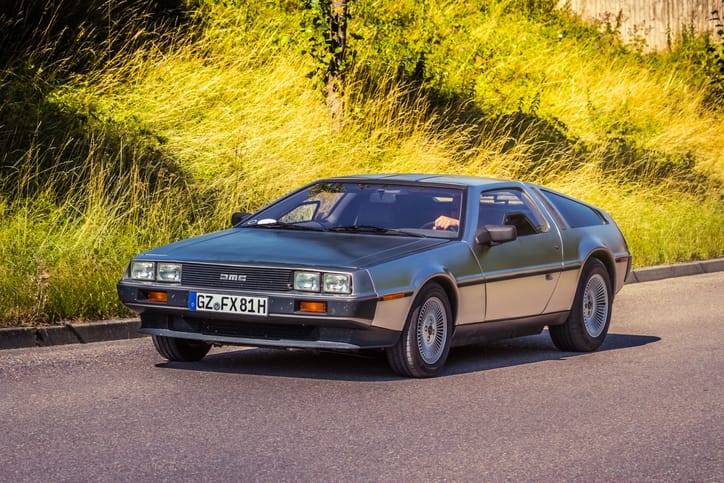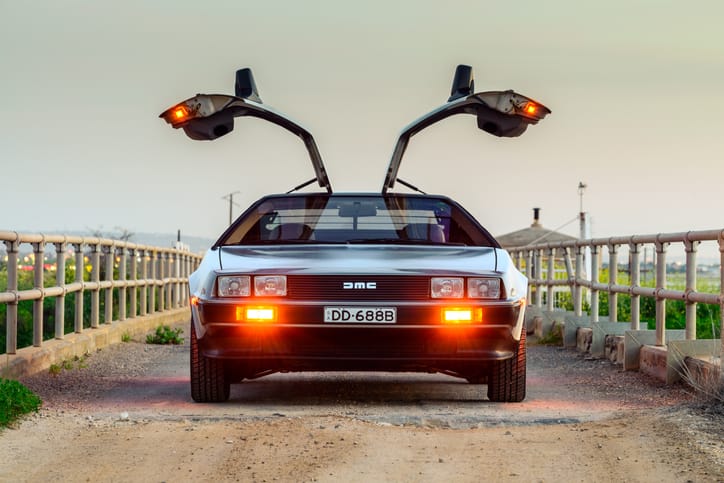The DeLorean DMC-12: Delorean's best-selling cult classic in stainless steel style

The DeLorean Motor Company, a name synonymous with science fiction and time travel thanks to the "Back to the Future" trilogy, had a short but fascinating history. Their only production car, the DMC-12, holds the title of their best-selling vehicle, though "best-selling" might be a relative term in this case.
A Dream Built in Stainless Steel
John DeLorean, a charismatic engineer with a knack for self-promotion, envisioned a new kind of sports car. He aimed for a sleek, futuristic design with innovative features and impressive performance. The result was the DMC-12, unveiled in 1976.
The DMC-12's most striking feature was its brushed stainless steel body panels. Unlike traditional paint, stainless steel wouldn't rust and offered a unique, almost otherworldly appearance. Giorgetto Giugiaro, the legendary Italian designer behind cars like the Ferrari GTO and the Lotus Esprit, penned the DMC-12's sharp lines and iconic gull-wing doors. These doors, a nod to the Mercedes-Benz 300SL Gullwing, added a touch of drama and theatricality to the car.
Under the Glossy Shell
While the exterior screamed innovation, the DMC-12's underpinnings were less revolutionary. The chassis was adapted from Lotus, and the engine, a Peugeot Renault Volvo (PRV) V6, offered decent but not earth-shattering performance. With a 0-60 mph time hovering around 10 seconds, the DMC-12 wasn't a speed demon, but it handled well and offered a comfortable ride.
The interior, trimmed in leather and featuring a modern instrument cluster, aimed for a luxurious feel. However, some critics found the execution lacking, with some materials feeling cheap compared to the car's hefty price tag.
Production and Controversy
DeLorean chose Puerto Rico for his factory, lured by government incentives. However, production was plagued by delays and quality control issues. The stainless steel body, while aesthetically pleasing, proved difficult to work with in mass production. The gull-wing doors, too, presented engineering challenges that added to the cost.
Financial troubles soon followed. DeLorean's reliance on government loans and a flamboyant lifestyle fueled public scrutiny. In 1982, he was arrested on charges of cocaine trafficking, a scandal that ultimately doomed the company. Production ceased in 1983, with only about 9,000 DMC-12s ever built.
A Legacy Ignited by Hollywood
Despite its troubled history, the DeLorean DMC-12 found a unique place in pop culture. In 1985, the movie "Back to the Future" featured a modified DMC-12 as a time machine. The film's success, and its sequels that followed, catapulted the DeLorean into the cultural spotlight. Suddenly, the car's unconventional design and gull-wing doors weren't seen as odd anymore, but as cool and futuristic.
The Enduring Allure of the DeLorean
Today, the DeLorean DMC-12 holds a special place in the hearts of car enthusiasts and movie fans alike. Its unique design continues to turn heads, and its association with time travel adds a touch of mystique. While not a commercial success in its time, the DMC-12 has become a cult classic, a testament to the power of innovative design and a pop culture phenomenon.

Beyond the Glimmer: A Look at the DMC-12's Legacy
The DeLorean story isn't just about a cool car and a blockbuster movie. It's a cautionary tale of ambition, financial mismanagement, and the challenges of bringing a revolutionary idea to market. The DMC-12's legacy goes beyond its Hollywood fame. It serves as a reminder of the risks and rewards of innovation in the automotive industry.
The Future of DeLorean?
The DeLorean name wasn't completely buried with the company's demise. In 1995, a new company acquired the remaining DeLorean parts and cars. They continue to restore, maintain, and even produce a limited number of new DMC-12s using leftover parts. Whether a truly new DeLorean model will ever emerge remains to be seen.
However, the DeLorean DMC-12's story, with its blend of innovation, controversy, and pop culture fame, ensures its place in automotive history. It's a reminder that sometimes, the most interesting cars aren't always the fastest or the most luxurious, but the ones that capture our imagination and leave a lasting impression.
